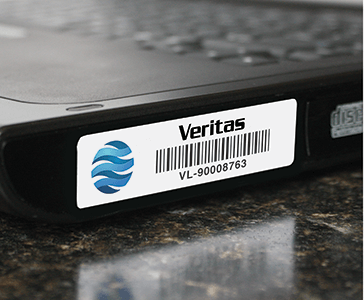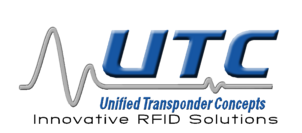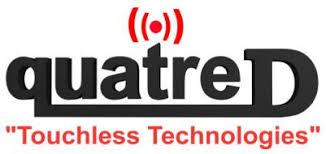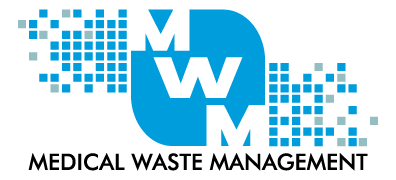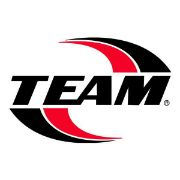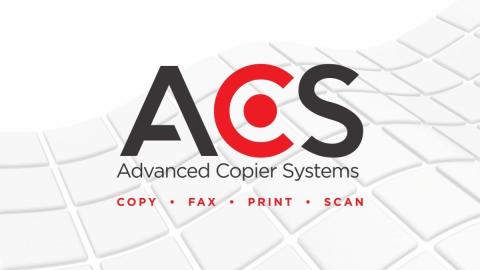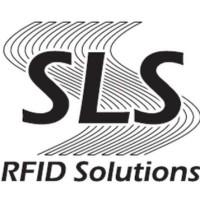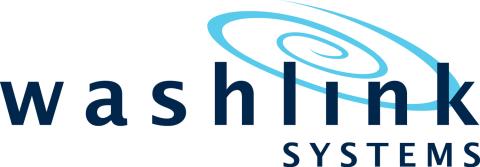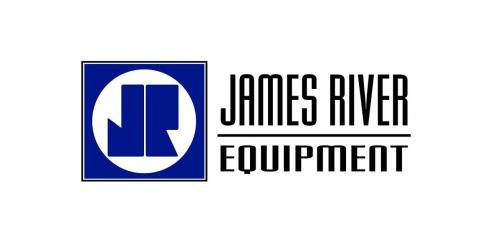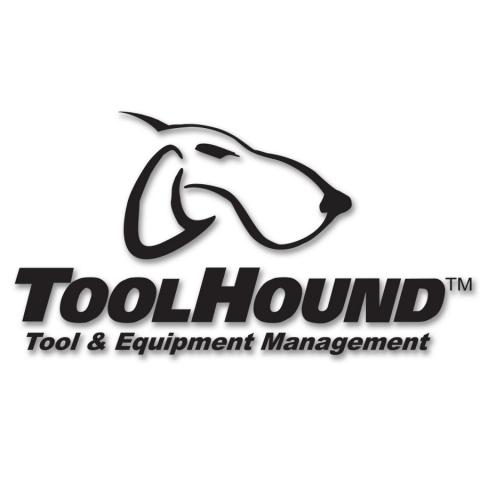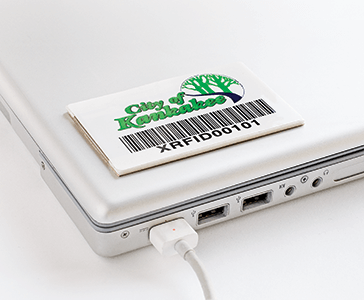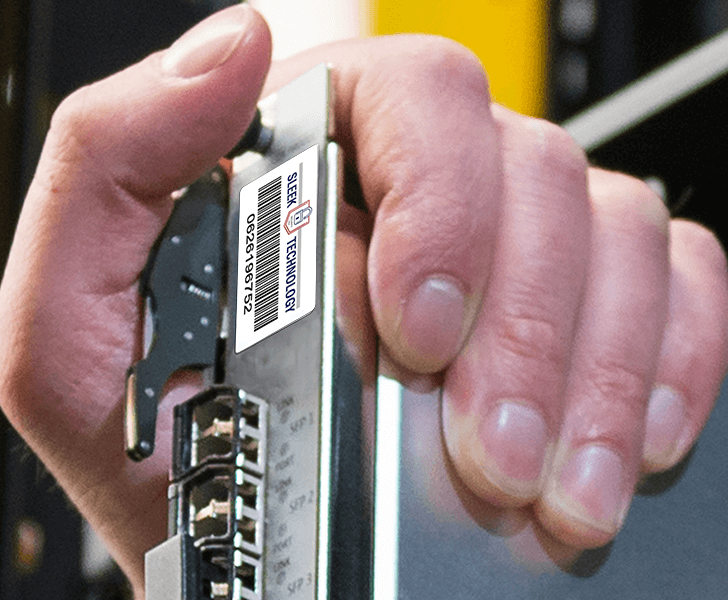
Table of Contents

Don’t have time to read the entire guide right now?
Fill out the form for a downloadable PDF version of the guide you can reference later
Chapter 1
Asset management is the functional area of your company that values your assets, most commonly IT assets, such as laptops, monitors, printers, etc. Assets are the cornerstone of your business, and asset management and tracking are vital to the success of your company. Properly tracking your assets and knowing where they are in the supply chain will help you control your company's operations more efficiently. Asset tracking also includes inventory management; when you have a large amount of inventory, it is important to keep track of it so that you can ensure that you have what you need when you need it. You also want to prevent product loss and damage, eliminate replacement and repair costs and ensure timely deliveries.
Asset management, however, is for more than just control over the supply chain - or inventory management. Asset management, which is the primary focus of this handbook, is specifically intended to ensure your equipment is where it is supposed to be, maintained properly and accounted for financially. Asset management offers many benefits for modern businesses, including:
- Eliminating unnecessary costs
- Preventing product loss
- Ensuring timely deliveries
- Improving supply chain efficiency, productivity and accuracy
More from the Blog
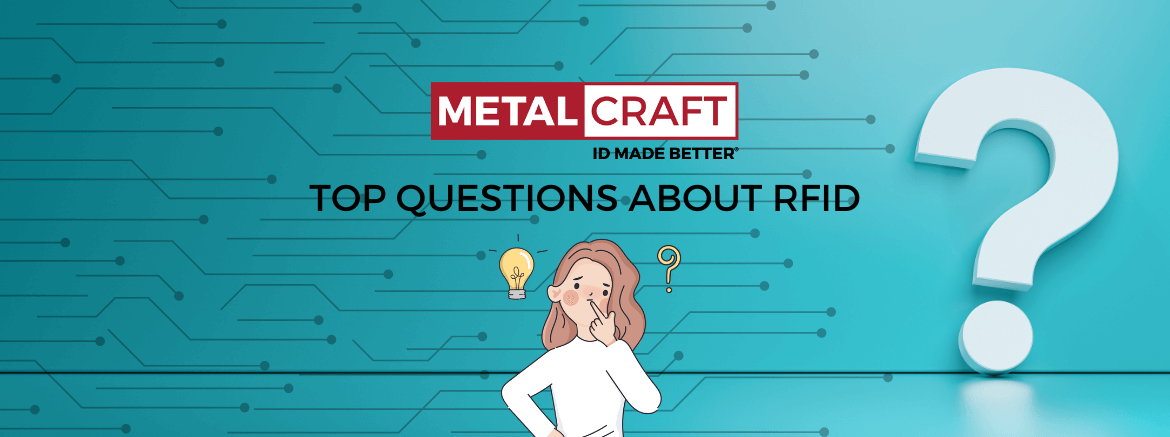
Beyond RFID Tags: Top Questions About RFID Technology
What is RFID?
RFID, or radio frequency identification, is a technology that utilizes…
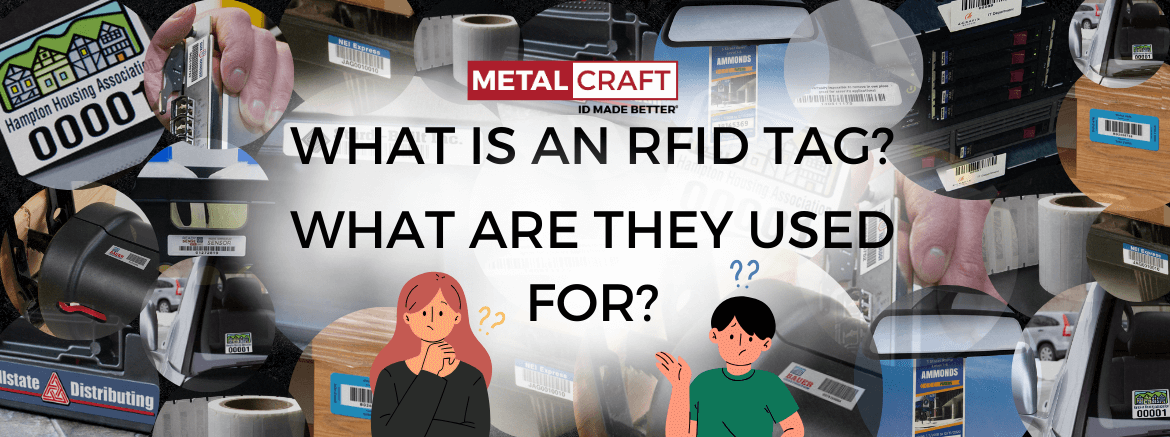
What is an RFID Tag and what are they used for?
What is an RFID Tag?
An RFID (radio frequency identification) tag is a small electronic…

Cheap RFID Tags (and why they may not be as cheap as you think)
Everyone wants a cheap solution to their RFID tracking application. They often think a good way to…
Chapter 2
To capitalize on these benefits, it's best to move beyond manual tracking and invest in auto-ID technology. the most common type is the humble barcode.
What is Barcoding?
 Barcodes are a series of black and white stripes that are used to identify assets. These stripes comprise alternating thick and thin lines that form a series of "bars" on the affixed label. Each letter or number can represent different products, and the code is unique to each product.
Barcodes are a series of black and white stripes that are used to identify assets. These stripes comprise alternating thick and thin lines that form a series of "bars" on the affixed label. Each letter or number can represent different products, and the code is unique to each product.
Barcodes can also contain information such as the weight of the product, the price, where the product was made and other information about the asset. The barcode can be scanned by a reader, which will then upload that information into a computer. This helps store employees keep track of what items are being sold and the price of the product. This information can also be accessed by customers who are checking out items themselves.
Barcodes were first developed in the 1940s to track inventory. At first, they were used to track military supplies, but they have since been adopted by businesses in all industries. They did not become widespread until a few decades later when they became compatible with computers. In 1974, UPC was put into practices and used on grocery products in the United States. Barcodes are now used to track everything from groceries to medical supplies.
There are two types of barcodes: linear (or one-dimensional) and two-dimensional. Linear barcodes are the most common type and are found on most products. A linear barcode is made up of a series of thin black bars and spaces that are arranged in a particular pattern. When scanned, this pattern is turned into digital information that can be read by computers. Linear barcodes can be put on assets to track information about the assets, such as maintenance information, when the item was purchased and other information.
Two-dimensional barcodes, also known as stacked codes are more complex than linear barcodes, provide more information, hold more data and are easier to read when printed on small objects. Unlike linear barcodes, stacked codes are read by a laser rather than an optical scanner.
Each one-dimensional bar is seven units wide and contains a certain number of unit spaces within the width, alternating between dark and light. The start symbol (which is always one thick line) and stop symbol (always consisting of two lines) come at the beginning and end of the barcode, respectively. Different one-dimensional barcodes have different symbologies and are not all the same (e.g., code 39, code 128, etc.). This makes it possible for scanners to find where each code begins and ends. To encode any given data into a barcode, you need an original piece of data called a "message," which represents whatever sort of information you're trying to encode into a tag (e.g., product information or price). This data is then translated into barcode form, which results in a unique sequence of bars and spaces that make up the code.
QR codes are a type of two-dimensional barcode that hold more information. Like linear barcodes, QR codes are made up of black bars and spaces with thicker lines in some places. Unlike most other types of barcode, QR codes can be scanned even if they're damaged or dirty because the information they contain is arranged not only horizontally but also vertically. This means that there are three possible directions in which you can swipe your scanner over the code, so it's easy to get the right angle for scanning, no matter how large or small the code is printed. When a QR codes is scanned, it's translated into a regular URL that links to a website. This is why you often see QR codes on ads or in magazines directing you to a company's website. This can also be used in asset management; made more popular due to the low cost of readers allowing users to scan with their phones.
What is RFID?
Radio Frequency Identification, or RFID, refers to a technology where information is transmitted wirelessly over radio waves. It is an automated identification method that uses radio waves to read and capture information stored on a tag attached to an object. RFID systems can be used to automatically identify multiple assets at once. This automated identification of items and the tracking of their location over time is helpful in warehouses and other inventory storage and management facilities.
RFID systems are made up of three main components:
Tags
 RFID tags contain an inlay with an integrated circuit (IC) which, in turn, has small memory banks - storing bits of valuable information that can be read and used for asset management and a variety of other purposes. They use radio waves to communicate with nearby readers, sending over portions of identifying data. The information stored in RFID tags can range anywhere from a single serial number to multiple pages of data.
RFID tags contain an inlay with an integrated circuit (IC) which, in turn, has small memory banks - storing bits of valuable information that can be read and used for asset management and a variety of other purposes. They use radio waves to communicate with nearby readers, sending over portions of identifying data. The information stored in RFID tags can range anywhere from a single serial number to multiple pages of data.
Readers
 Readers, also called transceivers, are basically the other end of the information exchange. They receive radio waves from the tags and translate them back into useful data. Readers are devices with one or more antennas that can emit their own radio waves and scan the signals of any RFID tags within range.
Readers, also called transceivers, are basically the other end of the information exchange. They receive radio waves from the tags and translate them back into useful data. Readers are devices with one or more antennas that can emit their own radio waves and scan the signals of any RFID tags within range.
RFID readers offer some versatility depending on the needs of your application. You can have mobile readers that you can carry around in your hand to scan tags, or they can be mounted in a single location to scan tags that are placed in or enter into their proximity. Readers can even be built into existing architecture like a cabinet or doorway.
Middleware
 Middleware serves as the essential interface between the reader and your company's databases and information management software. Not only does middleware handle communication between the reader and your existing systems, but it also helps to filter, aggregate and interpret all that data coming from the RFID tags.
Middleware serves as the essential interface between the reader and your company's databases and information management software. Not only does middleware handle communication between the reader and your existing systems, but it also helps to filter, aggregate and interpret all that data coming from the RFID tags.
The RFID system was invented by Harry Stockman in 1945. He was an engineer working for the US Army and he was trying to develop a way to track vehicles and munitions over a large area. The Radio Frequency Identification Device Patent was filed on May 14, 1973, by Stockman and six others. The patent was issued on September 28, 1976.
The first use of RFID to verify product shipments occurred in the 1980s at IBM.
Tough Thin RFID Tag (TTT) has been used to track assets over wireless radio frequencies since the 1990s. Interest in RFID technology increased during the early 2000s, which saw a number of companies developing RFID systems.
Webinar Events
MODEX 2024 brings those who are a part of the supply chain together to discuss manufacturing and supply chain solutions.

A Quote can go here -
or an important statement statistic or surprising fact.

Checklist or Bullets
- Bullet poines and lists are agreat way to
- Break up longer copy and display
- Complex information in an easyto read format
The closest thing you will find to a one-size-fits-all RFID solution! The European Universal Mini RFID Tag is a surface-independent tag that uses a unique inlay design and passive RFID technology to obtain excellent read ranges regardless of the surface – metal, plastic, even wood allowing you to use only one RFID tag for your asset tracking application.
Case Studies
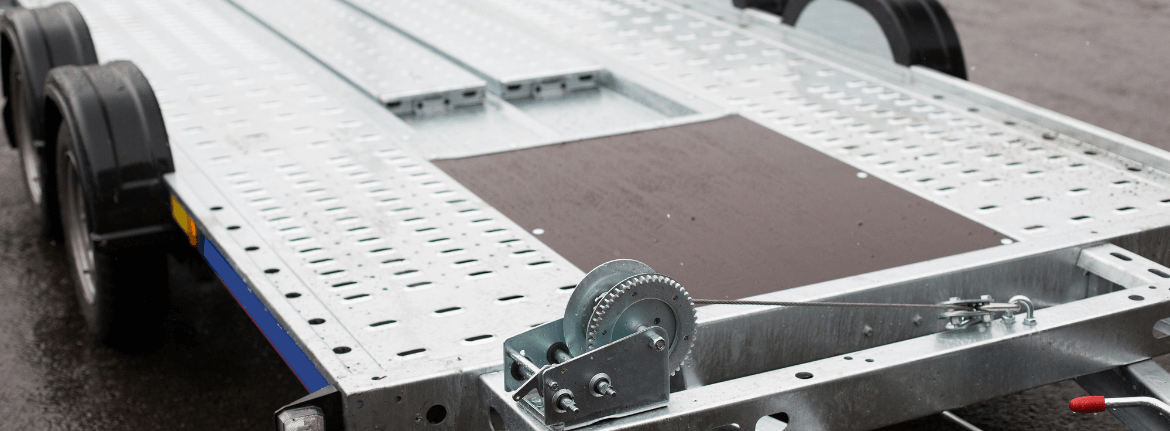
Durable Tags Never "Trail" the Competition
Background
In the competitive landscape of the trailer manufacturing industry, effective product identification is crucial for brand recognition, customer satisfaction…

Creating a Memorable "Experience"
Background
Experiential marketing has seen a remarkable growth in recent years, transforming the landscape of traditional brand promotion. This dynamic approach…
Tracking "Spirited" Barrels
Background
Minden Mills Distilling is part of Foley Family Wines, a Sonoma Valley-based portfolio of highly acclaimed wines since 1996 and represents the expansion of…
Chapter 3
RFID in Action
 RFID range is dependent on RF transmitting power, the sensitivity of the receivers, tag placement and orientation, the application environment and other factors having to do with system planning, design and installation; therefore, when evaluating RFID distance ranges, keep in mind that these ranges will vary depending on these and other variables.
RFID range is dependent on RF transmitting power, the sensitivity of the receivers, tag placement and orientation, the application environment and other factors having to do with system planning, design and installation; therefore, when evaluating RFID distance ranges, keep in mind that these ranges will vary depending on these and other variables.
RFID systems are used in many different applications, such as:
- Municipal and government
- Agriculture
- Healthcare
- Retail
- Food and beverage industry
- Sports and entertainment venues
- Industrial automation and plant floor control
- Logistics and supply chain management
The use of RFID systems is growing rapidly, as the technology continues to evolve and improve. For example, ultra-high frequency (UHF) RFID tags are becoming increasingly popular for item-level tagging in retail stores. This is because UHF readers have a larger read range, which allows the tags to be detected through most types of product packaging. This makes them a more cost-effective solution for item-level identification and tracking applications in retail stores.
Different RFID Frequencies
RFID systems can vary in performance based on their frequency. There are three main frequency ranges for standard RFID systems.
Low Frequency
RFIDs that transmit in low frequencies (LF) are the simplest and most basic option available. Low-frequency options can range anywhere from 20 to 300 KHz, with very short read ranges, often only a couple of centimeters and limited data transmission.
LF RFID tags are typically used in applications such as tracking inventory and assets (especially in crowded spaces with numerous tagged objects, such as in warehouses), animal tracking for livestock and controlling access to secure areas (simple access control), such as letting vehicles through gated systems. They are also used for identifying and authenticating objects.
Livestock Tracking
 LF RFID technology has been used in agriculture for decades, but its use is becoming more widespread as the technology becomes cheaper and more accessible. RFID tags can be placed on any object, not just cows, and they can be used for a variety of purposes in agriculture, including to track the movement of animals, both in and out of farms. This is particularly useful for livestock that are being processed at meat-processing plans, as it helps ensure that all animals are accounted for and that there are no mix-ups.
LF RFID technology has been used in agriculture for decades, but its use is becoming more widespread as the technology becomes cheaper and more accessible. RFID tags can be placed on any object, not just cows, and they can be used for a variety of purposes in agriculture, including to track the movement of animals, both in and out of farms. This is particularly useful for livestock that are being processed at meat-processing plans, as it helps ensure that all animals are accounted for and that there are no mix-ups.
Simple Access Control
 Some companies use LF RFID tags as badges or keys for their employees, so they can only access certain parts of the building. This is especially useful in high-security industries, such as the military or government agencies, but it could also be used for anything from accessing a building to starting a car.
Some companies use LF RFID tags as badges or keys for their employees, so they can only access certain parts of the building. This is especially useful in high-security industries, such as the military or government agencies, but it could also be used for anything from accessing a building to starting a car.
High Frequency
Most RFID systems operating in a high-frequency (HF) range will come in at 13.56 MHz, though they can range anywhere from 2 to 30 MHz. NFC, or near-field communication, is a subset of HF, and it works in the standard 13.56 MHz range. The NFC protocol was approved by the International Organization of Standardization, or ISO, and operates in the proximity of only a few centimeters (depending on conditions) and without line-of-sight readers (no physical contact is required).
HF RFID systems have a somewhat greater read range than LF transmissions - up to about a meter - and have larger memory options. These systems are becoming increasingly popular in marketing and interactive experiences, as well as critical access control and data transfer applications.
This type of tag is often used for inventory tracking, as it is small and can be read quickly. HF RFID tags are also less expensive than LF but typically more expensive than UHF. They are also used for transit tickets because they are durable, waterproof and easy to wear on clothing so they won't get lost. They also have high memory capacity, which allows they to store more information than other types of RFID tags.
Marketing and Interactive Experiences
 HF RFID is all around us. It's in our phones, our wallets, and even in the chip used to pay for items at a gas station or grocery store. HF RFID is used in marketing and interactive experiences to improve the customer experience. Retailers use HF RFID for the following:
HF RFID is all around us. It's in our phones, our wallets, and even in the chip used to pay for items at a gas station or grocery store. HF RFID is used in marketing and interactive experiences to improve the customer experience. Retailers use HF RFID for the following:
- Improving accuracy and efficiency of stock tracking; customers no longer have to wait for a store employee to find an item on a shelf
- Creating interactive displays that change based on what items a customer picks up
- Allowing customers to pay for items without having to swipe a card or type in a PIN
- Providing information about products (including where they were made, how they were made and what ingredients are used)
Libraries
 Libraries could use HF RFID tags to keep track of books, including making it easier to find books and tracking which books are being checked out and borrowed. Additionally, HF RFID tags are used to track and monitor medical supplies and inventory. This helps ensure that hospitals have the supplies they need in stock.
Libraries could use HF RFID tags to keep track of books, including making it easier to find books and tracking which books are being checked out and borrowed. Additionally, HF RFID tags are used to track and monitor medical supplies and inventory. This helps ensure that hospitals have the supplies they need in stock.
Quality Control
 HF RFID is used in large warehouses and distribution centers to quickly track pallets and large cases. This is especially useful in distribution centers where there many items are being moved around at once. Using RFID technology, these centers can track everything and ensure that nothing is misplaced.
HF RFID is used in large warehouses and distribution centers to quickly track pallets and large cases. This is especially useful in distribution centers where there many items are being moved around at once. Using RFID technology, these centers can track everything and ensure that nothing is misplaced.
HF RFID technology can also be used for quality control. For example, some companies use RFID sensor tags that monitor temperature and other environmental factors for wine or other high-value items. This helps to ensure that the products are being stored and transported in the correct conditions to avoid damage.
Ultra-High Frequency
Ultra-high frequency (UHF) RFID systems can range anywhere from 300 MHz to 3000 MHz and offer the most complex high-performing capabilities of the different frequency ranges. They have the greatest read ranges, which are largely dependent on the type of tag used. Because they have a longer range than HF tags, Ultra-High Frequency tags are often used for supply chain management and asset tracking.
Warehouses and Distribution Centers
 UHF RFID tags are perfect for large warehouses and distribution centers, where you need to track and identify multiple assets at once. The tags can be read quickly and easily, even if they are hidden among other objects. This is especially useful for tracking pallets and large cases, which can be difficult to identify with traditional barcode scanners.
UHF RFID tags are perfect for large warehouses and distribution centers, where you need to track and identify multiple assets at once. The tags can be read quickly and easily, even if they are hidden among other objects. This is especially useful for tracking pallets and large cases, which can be difficult to identify with traditional barcode scanners.
Work-in-Process
 UHF RFID tags are also useful for work-in-process (WIP) tracking in a production line. In a production line, it can be difficult to keep track of all the different components and parts that go into making a final product. With UHF RFID tags, you can easily track each step of the process, ensuring that everything is assembled in the correct order and that no steps are skipped.
UHF RFID tags are also useful for work-in-process (WIP) tracking in a production line. In a production line, it can be difficult to keep track of all the different components and parts that go into making a final product. With UHF RFID tags, you can easily track each step of the process, ensuring that everything is assembled in the correct order and that no steps are skipped.
Access Control
 Due to their faster read rates, UHF RFID tags are perfect for tracking high-speed objects, like vehicles. For example, you can use them to track who goes in and out of a building. This can be especially useful for large facilities, like factories or schools. Some luxury cars have them built into the windshields, so they can be used for not only access control but also theft prevention. The tags can also be used to track a car's location and speed. This is especially useful for fleet managers who need to keep track of their vehicles.
Due to their faster read rates, UHF RFID tags are perfect for tracking high-speed objects, like vehicles. For example, you can use them to track who goes in and out of a building. This can be especially useful for large facilities, like factories or schools. Some luxury cars have them built into the windshields, so they can be used for not only access control but also theft prevention. The tags can also be used to track a car's location and speed. This is especially useful for fleet managers who need to keep track of their vehicles.
Resource
Asset management applications in manufacturing - includes real-world case studies for both barcode and RFID.
What is the best solution for asset tracking in manufacturing? Read our latest article to learn how to determine what identification products in your asset tracking solution in manufacturing.
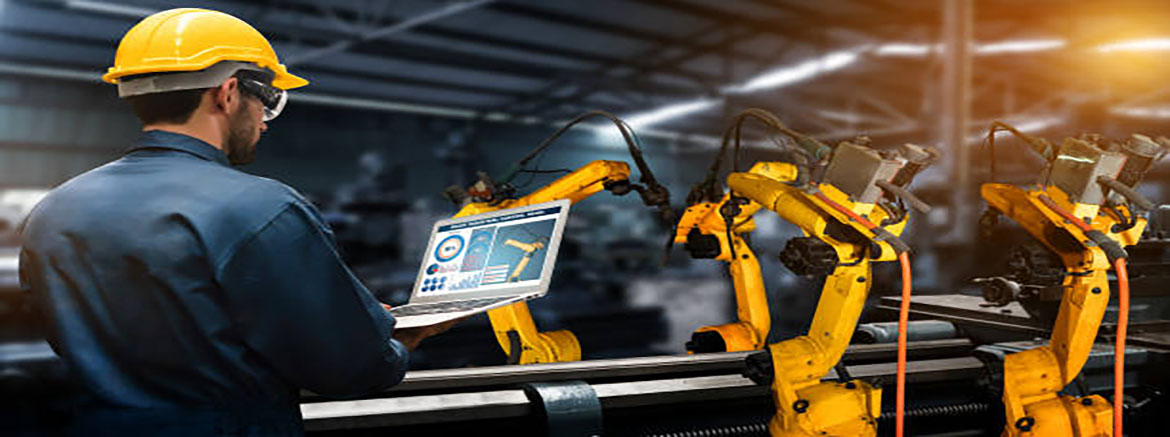
Chapter 4
Types of RFID Tags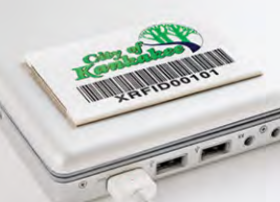
There are two primary categories of RFID tags: tags with batteries and tags without batteries. Tags with batteries are called battery assist or active RFID tags. Battery enabled RFID tags incorporate a battery as a power supply or to supplement the power provided by the RFID reader.
In the UHF subset of RFID systems, you have three different types of RFID: active, passive and semi-active. This mainly has to do with the style of the tag.
Active RFID Tags
Active RFID tags are the most complex of the different tag types. They are powered by their own batteries and have an integrated circuit, antenna and onboard transmitter. They emit a signal that can be detected by a reader up to several hundred feet away.
With their own battery, active tags can support additional features and functionality, such as integrated sensors or increased memory and logic. The onboard transmitter also allows these tags to work over greater distances. They allow the tags to send energy directly to the reader rather than just reflecting back energy that the reader transmitted to the tag, thus increasing the read range.
The cost of this added functionality is that active RFID tags take up more space than their passive or semi-active counterparts. Active tags also cost more initially. Since they are battery-operated, you can expect these tags to have shorter lifespans, as well. As such, active RFID tags are often too cost-inefficient and overly complex for most operations. Some active tags, however, can last for 10 years or more, depending on the frequency used and whether they are single-frequency or multi-frequency.
Passive RFID Tags
Unlike active tags, passive RFID tags are typically comprised of only an integrated circuit and an antenna. They do not have a battery and must instead be powered by using electromagnetic energy transmitted from the RFID reader through inductive coupling when dealing with high frequencies or through backscatter if you're working with UHF. Passive RFID tags have a shorter read range than active tags.
When a passive label is read/scanned by an RFID reader it is energized (interrogated) by the radio waves coming from the reading device. The energy received from the radio waves are received via antennas attached to the passive tag's chip, which powers the chip and responds to the reader, all in a matter of milliseconds.
Since they don't have their own battery, passive RFID tags can only "run" when needed, leading to energy savings and extending their lifespan. It's also easier to reprogram passive RFID tags, leaving the serial number the same and changing whatever data you need to alter on the backend. They're also easier to incorporate into your operations with the help of an RFID expert.
However, that simplicity does carry over into function, as well. Passive RFID tags don't have the increased read ranges of active tags or the ability to add on as many bells and whistles. This makes passive RFID tags the perfect choice for most applications that only require intermittent check-ins at certain points, but not a great choice for more demanding applications that require constant tracking in real-time.
Semi-Active RFID Tags
Semi-active RFID tags, also sometimes called semi-passive tags, are a bit of a compromise between the active and passive tags. They are made up on an integrated circuit, an antenna and a battery.
By having their own battery, semi-active RFID tags allow for the additional device functionality like active RFID tags, including sound notifications or real-time RFID tracking. However, without an onboard transmitter, they gain no benefit in terms of read range, and their battery puts them in the same category as active RFID tags for their decreased lifespan.
Resource
Discover why the design of the inlay is so important to RFID tag construction and how it can greatly affect the performance for your application in this white paper.
December 11th is Charles Walton's birthday, an inventor who played a huge role in bringing RFID technology into the mainstream. We're declaring this day as National RFID Day.

Chapter 5
Not only are RFID systems contactless, but they also do not require line of sight like other auto-ID technologies. For different applications spanning various industries, RFID technologies offer a long-term and durable solution for better asset management and tracking.
Fast Tracking and Better Asset Management
One of the biggest operational benefits of RFID technology is the ability to read multiple tags at once, with the option to instantly detect assets upon arrival. Rather than having to scan each barcode individually, taking the time to line the label up with the scanner, RFID works on proximity, allowing you to read a case lot of containers or pallets in a fraction of the time.
By instantly detecting assets upon arrival and pairing them with information in your database, RFID systems can better manage your assets than ever before. With RFID, you can easily cross-reference your inventory against assigned locations - both stationary and mobile - to see if certain assets are present, missing or in transit. This allows you to not only make sure that everything is running on schedule, but also pinpoint where an asset was lost if anything goes missing.
Reduced Human Error and Low Labor Requirements
With the automatic nature of RFID systems, human error is almost entirely eliminated. So logs as the tags are within range of the reader, and there is no outside interference from the environment, RFID technology reliability tracks your assets every time.
RFID-enabled asset management also requires far less labor than manual or barcode-only checks. Especially with higher-end tags and fixed readers, RFID asset management is the closest thing to a fully automated tracking solution.
Easy Integration and Upgrades
RFID can work with many existing systems, allowing you to easily integrate RFID systems into your supply chain. You can also choose to adopt RFID technology at certain locations to begin with, then add on additional locations at your own pace.
Durability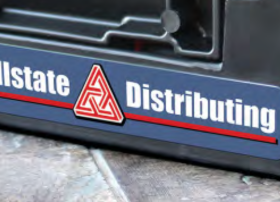
Depending on the construction of the tags, RFID tags can be extremely durable and can withstand exposure to sun, rain, and other harsh weather conditions. This makes them ideal for use in a variety of applications such as asset tracking, livestock management, and many others.
Higher Security
RFID technology offers a higher level of security than barcodes, which helps prevent the spread of sensitive information. For example, RFID tags are more difficult to counterfeit than barcodes. This makes them a more secure option for tracking large quantities of items. Overall, RFID provides a higher level of security and efficiency than barcodes, making RFID a better choice for businesses and organizations that need to protect their sensitive information.
Higher ROI
For many applications and use cases, RFID implementation can lead to a significant ROI when properly specified according to the requirements of your application.
Environmental constraints, asset compositions and read range limitations/requirements can all impact how effective and cost-efficient an RFID system is for your application. While RFID is considered the latest and greatest evolution in asset management, it may not be right for every application, especially if you're expecting a certain ROI in a specific time window.
That's why Metalcraft has the DART™ Qualification Process, to ensure that RFID is the right choice for a specific operation and that expectations are clear from the very beginning. By defining what you want to accomplish and your expected outcome, then comparing that to the requirements of your system, Metalcraft can make sure that you make the right choice.
Chapter 5
Choosing to go with RFID technology over barcoding for asset management comes down to performance, efficiency and reliability. Neither barcode nor RFID is better than the other in all scenarios; you have to pick the right technology for your application's needs. To help you determine your asset needs, ask yourself the following questions:
- What products am I tracking? Any notable materials like metal or liquids?
- How many things do I need to track?
- How secure does my asset tracking need to be? Am I tracking any sensitive information?
- How and where will my inventory tracking take place?
- How efficient does my tracking need to be? What are the advantages of quicker asset tracking?
- What is my budget?
- How long do I have to implement an asset management system?
- Are you tracking items in an open or closed system, does it leave the facility to be tracked in another location and do they have the same infrastructure?
Serialize/unserialized ... barcode and human readable ... we help you sort out your RFID numbering options to choose the best one for your application.
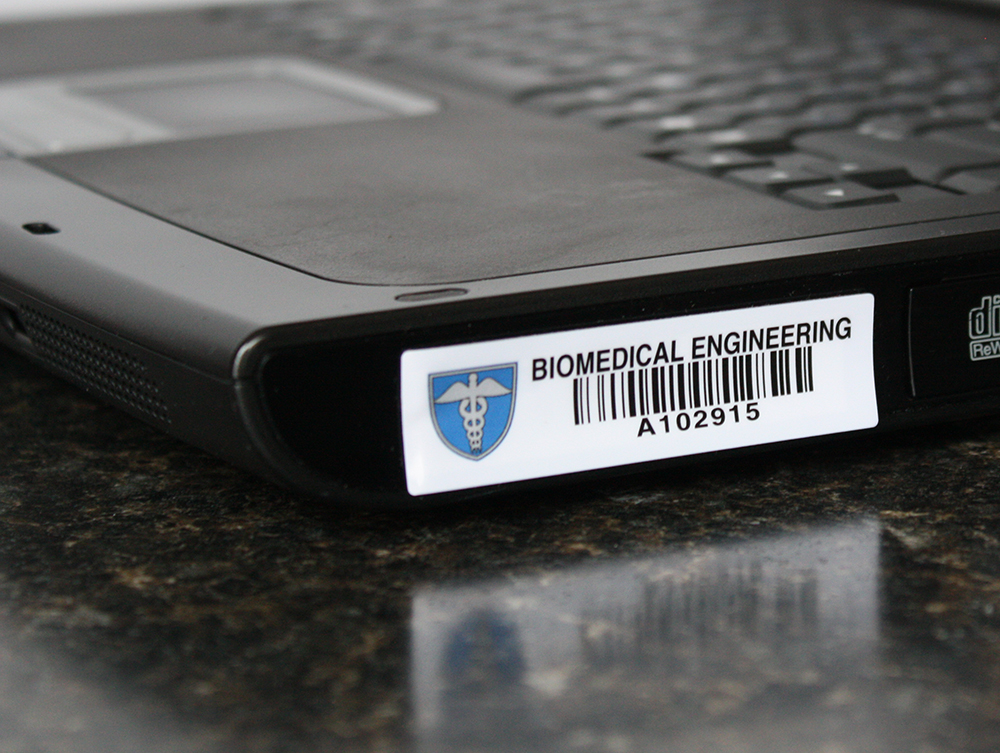
Chapter 6
Even beyond data redundancy, barcodes can still be powerful tools in the pursuit of better asset management. While they lack many of the more industrious and attractive qualities of RFID, their tried-and-true nature still has benefits for many applications, sometimes even in place of RFID.
Fast Tracking and Better Asset Management Reader Compatibility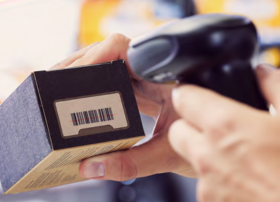
Some RFID readers can also scan barcodes. This means that if you're already using barcodes you don't have to purchase new scanners. If you already have new barcode readers, you can still incorporate both technologies into one tag; however, it's critical that you keep the assets' location information in sync; some enterprise software systems can help address this issue.
A More Complete View of the Supply Chain
Many companies currently use a mix of both technologies, and the coexistence of barcodes and RFID can provide the best of both worlds. To achieve this, you need to understand the characteristics of barcodes and RFID, how they work and what they can do. By understanding how each technology works, companies can make informed decisions about which technology to use in specific locations or processes.
When products are scanned using both technologies in the tag, for example, the system can more efficiently track and monitor their products as they move through the supply chain, from beginning to end. This can improve visibility and efficiency throughout the supply chain.
Different Locations With Different Functions and Requirements
If you have different locations or departments with different requirements, it makes sense to use barcodes in certain locations and RFID in others, using a combination of visual data tracking and non-line-of-sight tracking.
For example, at a retail location, where customers make point-of-sale purchases, barcoding makes sense, while back at the warehouse, RFID is the ideal solution for quickly keeping track of product inventory.
Financial Considerations
Barcodes are more affordable than RFID tags. When a company uses both barcode and RFID tags, it can provide value where and when it's needed by using both solutions, as needed, without breaking the budget. Barcodes and RFID tags work well with existing technology, so companies with existing warehouse management systems can use this technology without having to re-enter information or purchase new software.
Flexibility of Product Information
Both technologies use radio waves to transmit information, which allows for greater memory storage in the tag and can provide more information about the product. For example, with a joint RFID-barcode solution, when you scan a barcode on an item, you will see basic product data such as price, size or color, and when you scan an RFID tag on an item, you will see more detailed product data, such as where the product was made and when it was produced.
Flexible Security Levels
Using both barcodes and RFID tags can provide higher levels of security. RFID tags are more difficulty to copy and are more secure than barcodes; therefore, when a company uses both barcodes and RFID tags, it can provide a higher level of security with RFID tags, where required, without having to completely convert its entire system.
Less Disruption to Operations and the Supply Chain
A joint RFID-barcode system can help create a more seamless process for companies that are automating their processes for product identification, shipping and tracking. For example, if a company uses barcode tags in addition to RFID tags, then the company can easily transition to using only RFID tags when the time is right, instead of trying to implement a huge process change all at once. For example, adding the printed barcodes to RFID tags on products can enable the transition to RFID and avoid unnecessary supply chain disruption.
Protection Against Failure
Using RFID and barcodes together can provide extra protection against failure of one or the other of the two technologies. If an RFID scan fails, barcodes can be used as a backup for item identification until the problem is resolved. For example, if an RFID tag is damaged, the added barcode can be scanned instead to prevent downtime.
Easier Transitions to RFID
If you need to transition to RFID more slowly due to financial considerations, gradually implementing an RFID solution alongside a barcoding system can save money and prevent disruption.
What Our Clients Say
Chapter 7
 When it comes to tracking assets, Metalcraft specializes in offering a complete solution for total asset management. With a mix of our team's RFID expertise and traditional labeling experience, Metalcraft will help you get your assets where they need to go, whether that's through RFID or barcodes, or a mix of both.
When it comes to tracking assets, Metalcraft specializes in offering a complete solution for total asset management. With a mix of our team's RFID expertise and traditional labeling experience, Metalcraft will help you get your assets where they need to go, whether that's through RFID or barcodes, or a mix of both.
Every time we're specifying a new solution, we use our deep product and technical knowledge to help customers solve their toughest asset management challenges, making sure to tailor our offerings to their specific needs.
Once we've worked with you to identify the right solution, our wide breadth of standard product offerings can be customized to meet the task at hand. We offer the most durable, technology-agnostic solutions coupled with an unmatched selection of adhesives.
We also offer custom printing and a better selection of traditional labels for all of your barcode needs. Both our barcode labels and RFID tags offer the greatest durability, accuracy and reliability in the industry. Our tags stay around for the long haul, you'll find that our solutions do too.
More than just another vendor, Metalcraft is your full-service partner for total asset management. Our team takes the time to actually learn about your business and needs so that we can develop the right solution - no matter the technology. Now that's ID Made Better®.
Feature Products
Feature Products
The closest thing you will find to a one-size-fits-all RFID solution! The European Universal Mini RFID Tag is a surface-independent tag that uses…
The closest thing you will find to a one-size-fits-all” RFID solution! The European Universal RFID Asset Tag is a surface-independent tag that…
A versatile and affordable RFID tag made in the USA to fit a wide array of on-metal and standard applications, the Universal MC RFID Tag is…
Dont Miss Expert Updates from Metalcraft
Subscribe to our blog updates for the latest in industry advancements

